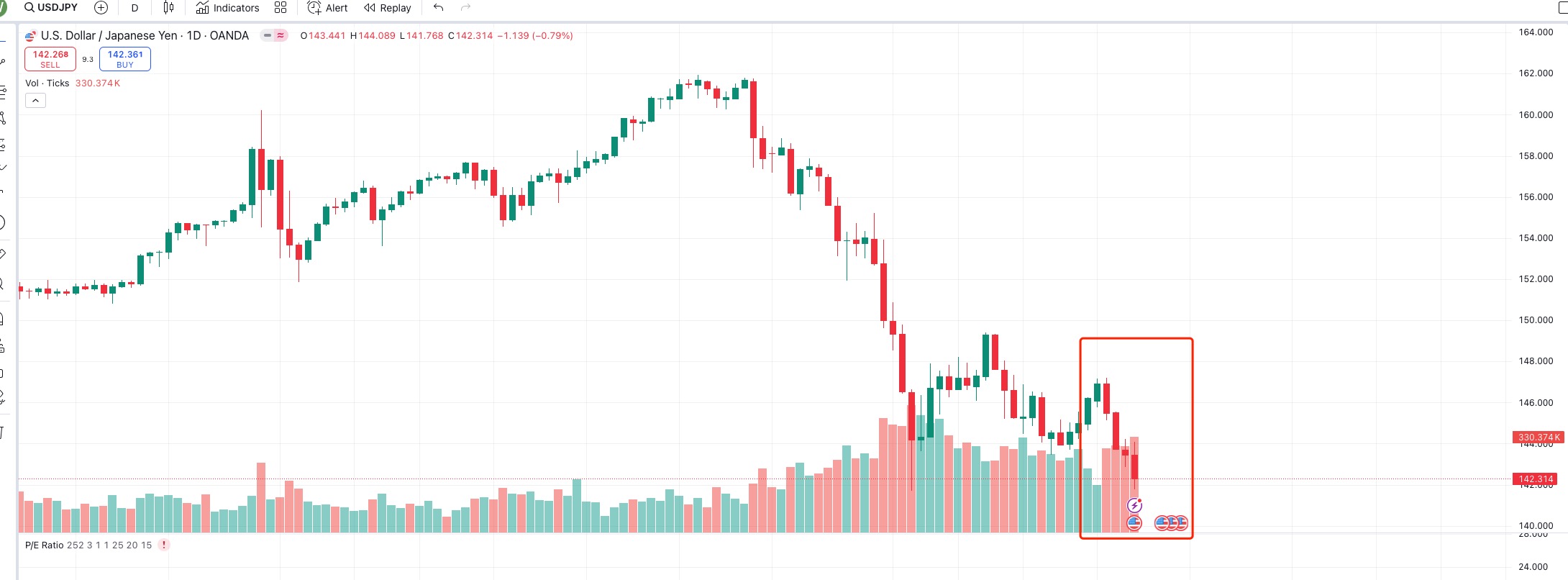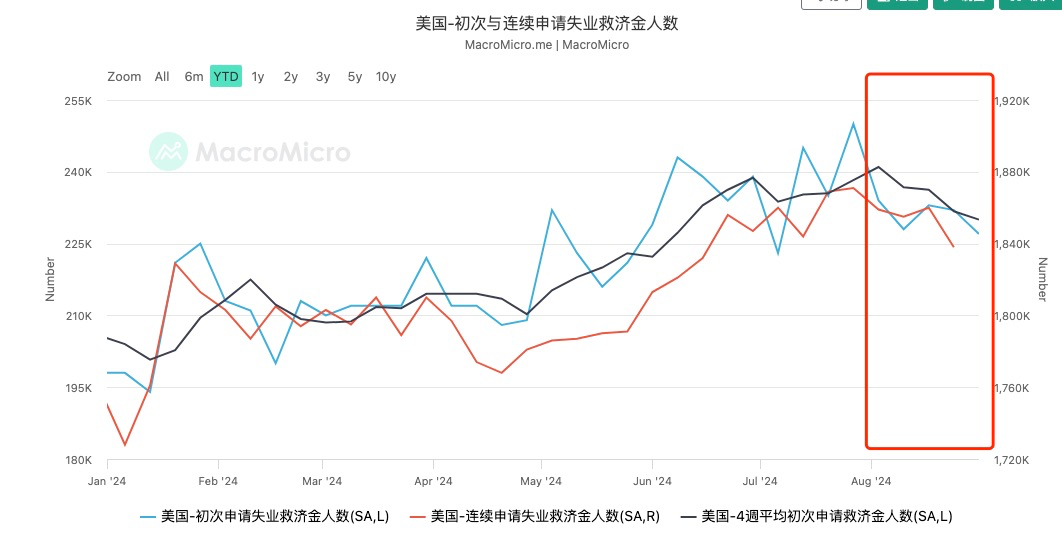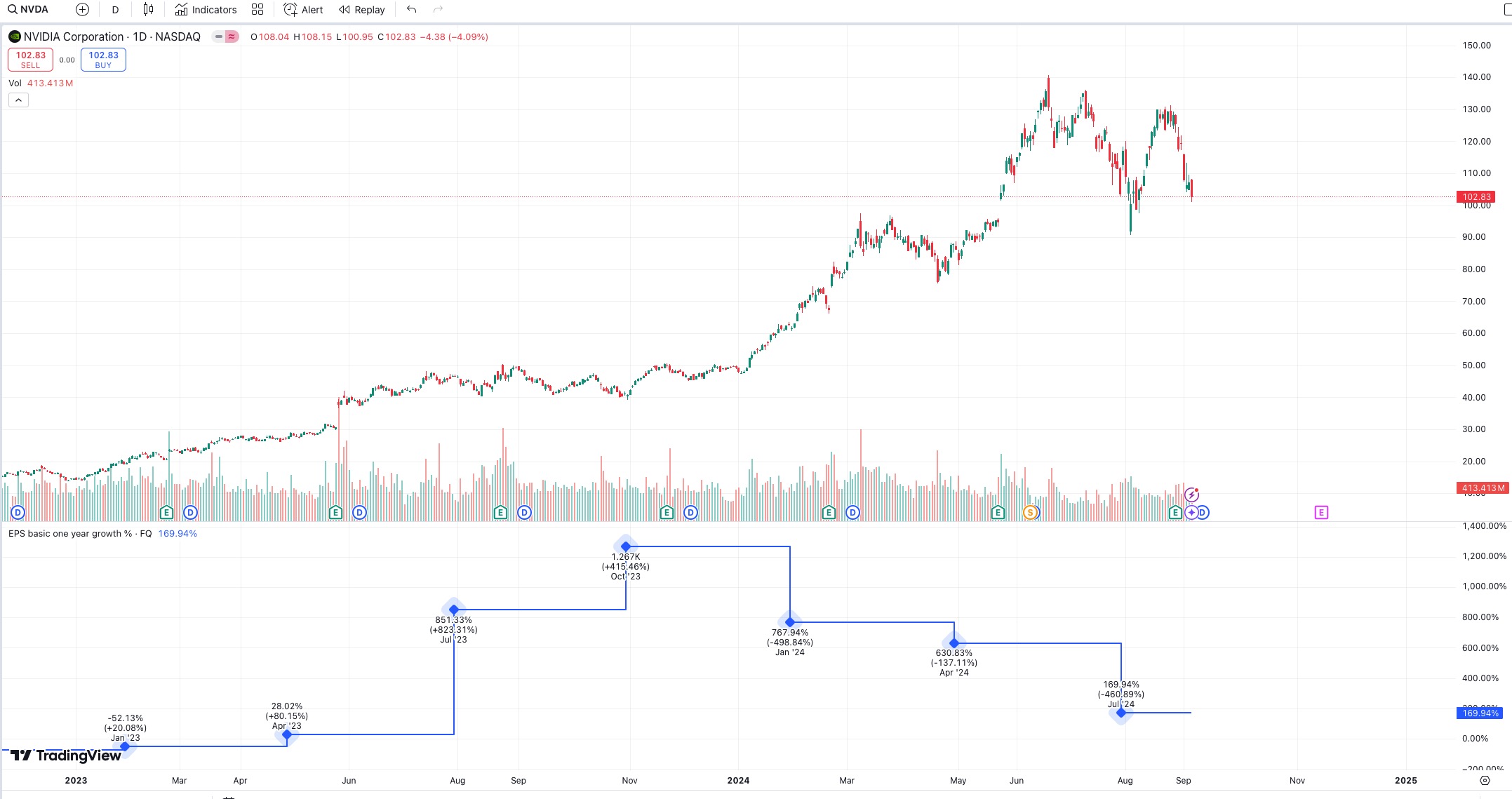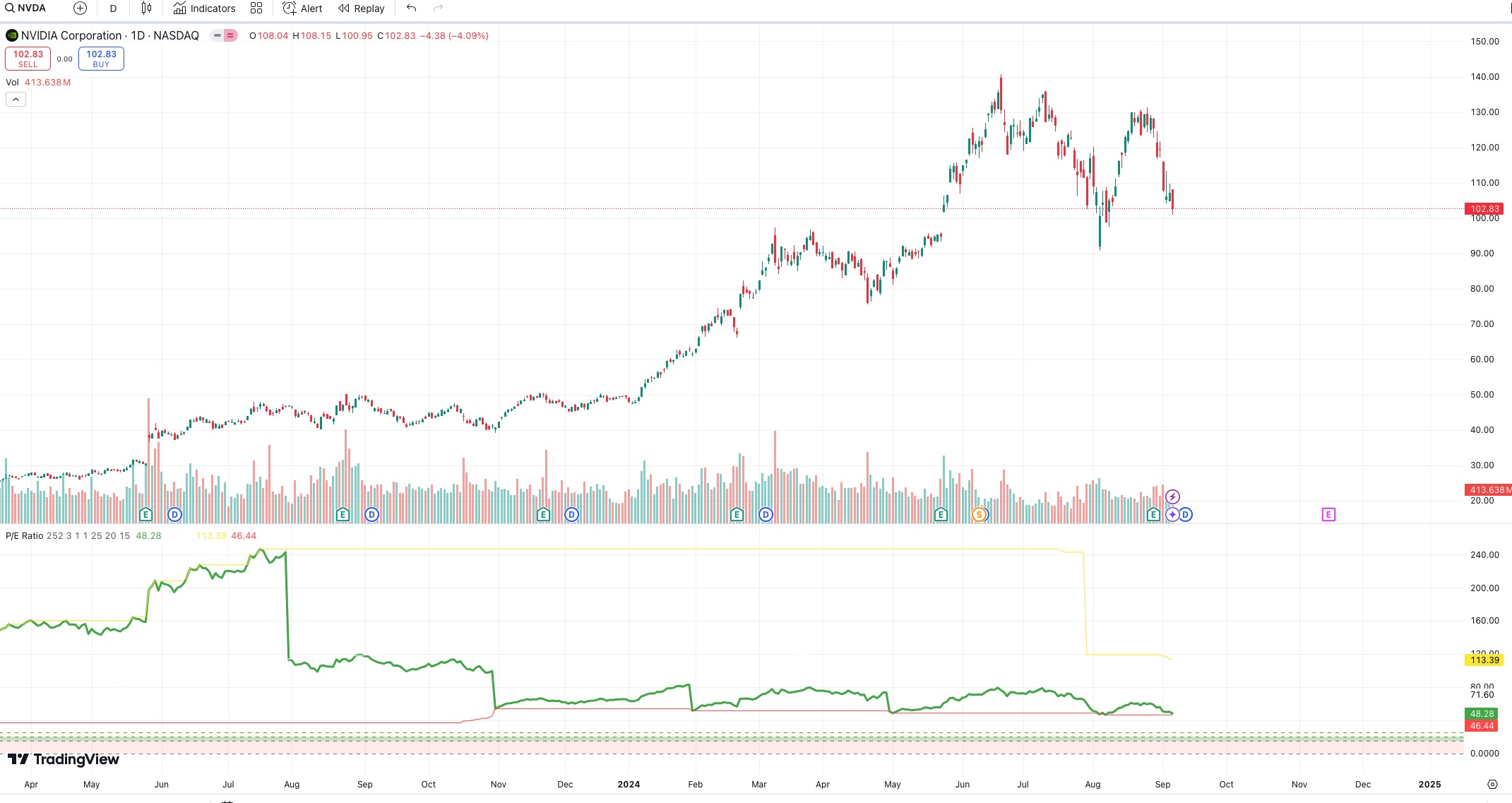原作者: @Web3 馬裡奧 (https://x.com/web3_mario)
上週,風險資產市場面臨一定壓力,尤其是週五,美國8月非農業就業、失業率等關鍵數據公佈後,出現較大幅度回檔。不過從數據來看,雖然沒有想像中的那麼好,但也不算特別糟糕,所以還是有必要把這個價格走勢揭開,看看到底發生了什麼事。因此,筆者週末總結了相關邏輯,並與大家分享了一些經驗。整體來看,本輪下跌的核心原因是美國非農業就業數據反彈不如預期,一定程度上引發了市場對美國經濟衰退的擔憂。本質上,隨著英偉達第二季財報的發布,業績成長放緩。作為本次多頭的核心驅動力,英偉達開始殺估值,資本加快科技板塊去槓桿步伐規避風險。
美國非農就業數據低於預期,但並非特別糟糕
首先,我們簡單來看看週五加密貨幣市場下跌期間非農就業和失業數據的變化。週五公佈的美國8月新增就業人數增加14.2萬個,高於7月的8.9萬個。這顯示就業市場有所改善,但與預期的16.5萬人仍有一定差距。失業率有一定下降,從7月的4.3%下降到4.2%。這也符合市場預期。
我在之前的文章中分析過,這個數據其實可以透過每週首次申請失業救濟人數的變化來提前觀察到。可以看到,8月首次申請失業救濟人數和連續申請失業救濟人數均呈現下降趨勢,顯示就業市場恢復良好。因此,非農資料遠超預期,引發市場對經濟衰退的嚴重恐慌。我個人保持觀望態度。由此引發的加密貨幣市場的下跌,很可能是以去槓桿週期為導火線的回饋。
那麼為什麼這樣一個看起來不算特別糟糕的數據會引發加密市場的劇烈波動呢?我認為根本原因還是英偉達Q2財報放緩帶來的去槓桿操作的回饋。
持續放緩的業績成長無法滿足資本預期,英偉達開始降低估值,科技板塊去槓桿加速
可以說,本輪牛市的核心驅動力是以NVIDIA為代表的AI板塊的成長。 8月29日,2024年Q2財報發布。雖然仍呈現成長趨勢,但引發市場拋售。核心原因是EPS成長加速下滑引發恐慌,市場開始殺死估值。這裡簡單解釋一下背後的邏輯。通常,股票的價格是市場對公司估值的回饋,資產的價值是透過各種財務數據、預測和市場資訊來評估的。股票估值的核心目標是確定一家公司是否值得投資以及價格是否與其潛在盈利能力或資產狀況相符。最基本的估值方法之一是計算本益比(P/E Ratio),並將其與公司行業平均值進行比較,以確定當前股價是否被高估或低估。計算本益比的方法是用美股盈餘即EPS除以股票價格,因為股票的核心價值是股利權。
事實上,這個價值也可以理解為你根據公司的股息賺回你所投資的股票所需的時間。一般來說,由於科技業的高成長特性,市場會給予更高的本益比標準。這也很容易理解,因為市場認為,隨著高成長的不斷實現,公司的股息將成長得越來越快。因此,這種對未來成長的折扣將反映在市場對高股價的容忍度上。
澄清了這些背景後,我們來看看英偉達的財報反映了什麼。事實上,本質是EPS的加速下滑引發了市場對估值過高的擔憂。從這張圖我們可以清楚地看到這種影響。上半部是英偉達的股價,下半部是EPS的年比成長率。可以看到,第二季EPS成長率較第一季業績下滑明顯,且下滑趨勢加劇。
我們回想一下,在過去的六個月裡,市場對英偉達股價是否被高估進行了較為廣泛的討論。每次季度財報發布,都會出現價格波動。然而,英偉達每次都用亮麗的成長數據打破市場疑慮,並透過遠超預期的業績成長回報本益比。這給了市場一定的思維慣性。即使其市值一度達到第一的位置,這種高成長預期仍然維持。當然,這也是由於目前利率限制的影響,大部分產業都承受著不小的壓力。因此,這樣的成長苗子顯然受到了資本的青睞,資本選擇抱團取暖以應對高利率環境。但這樣的成長表現似乎並沒有達到資本持續走強的預期,也沒有像預期那樣將PE拉回46左右看似合理的區間,這意味著股價似乎被高估了,因此市場開始殺掉估值。因此可以看出,市場充分消化了8月29日的財報資訊後,英偉達股價在美國勞動節後的9月3日開盤後迅速下跌,導緻市盈率調整至46左右。還要看各機構的看法。目前各方態度似乎都比較樂觀,沒有進一步利空的消息。
在之前的文章中,我們曾經提到日圓是整個高息環境下廉價資金的來源,以及日本半導體產業與英偉達之間的關係。因此,在推高英偉達股價的過程中,日圓是槓桿資金的核心來源。隨著估值的下調,我們可以看到,儘管日本央行一再安撫,但市場實際上已經開始再次去槓桿以避免風險。 9月3日起,美元兌日圓匯率從147快速下跌至142,挑戰年初140的低壓水準。
日圓快速升值將進一步提高槓桿資金成本,進一步擠壓套利操作的利潤,從而進一步刺激去槓桿操作。因此,我們需要警惕由此帶來的負面回饋風險。
本文源自網路:剖析目前市場下跌的底層邏輯:英偉達成長放緩引發科技板塊去槓桿浪潮
原作者:Pzai,前瞻新聞 昨天,全球市場經歷了巨大的震盪,加密貨幣市場也無法倖免。鏈上,光是以太坊生態就創下了單日清算超過3.5億美元的紀錄。市場的一波浪潮刺激著 DeFi 的萬波浪潮,DeFi 專案如何應對?誰在海嘯退去時裸泳?因此,筆者寫了這篇文章來總結一下市場波動下 DeFi 的表現。穩定幣方面,Ethena方面,其穩定幣USDe昨日創下單日流出$9580萬的紀錄,總供應量也從巔峰時期的36億下降至31億左右。由於Ethenas機制,必須維持多頭部位…











